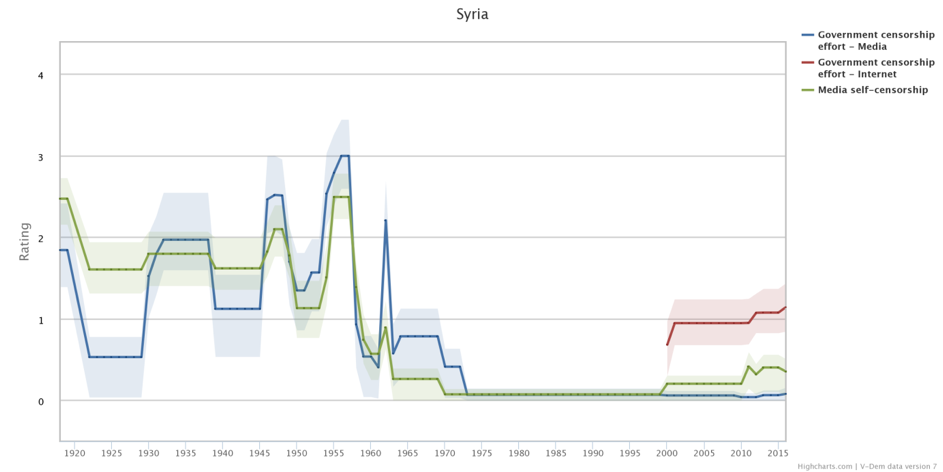Censorship in Syria
By: V-Dem Staff
Apr 13, 2018
On March 18, the Syrian president Bashar al-Assad could be seen driving to the rebel-held suburbs of Ghouta, where Syrian government’s military offensive last month led to 1,500 casualties. The videos were released by the government as a response to the gruesome images broadcast by international media during the past week. However, these images never appeared on Syrian media outlets.
This week’s graph analyzes the degree of censorship of the media and the internet by the government as well as self-censorship by journalists. V-Dem’s indicators on government censorship effort on the media and internet ranges from zero to four. Where lower scores indicate higher levels of censorship. The media self-censorship indicator measures the extent to which journalists practice self-censorship when reporting politically sensitive issues, with zero meaning complete and thorough self-censorship and the highest value three indicating little.
The graph shows that self-censorship by journalists tends to follow governmental efforts to censor media outlets. From 1920 to the 1960s the trajectories are rather erratic, but it is noticeable that by the late 1950s the media environment in Syria suffered indirect and limited attempts at censorship, with little or no self-censorship by journalists. By the early 1970s the situation changed drastically, with the country scoring poorly on all indicators until the present. The pattern is similar with regard to Internet censorship. Since its introduction in 2000, Syria has scored low on the indicator, meaning that the government has been successful in blocking anti-government content and websites.
If you want to learn more about censorship of the media and internet in Syria, use our online analysis tools at v-dem.net.


